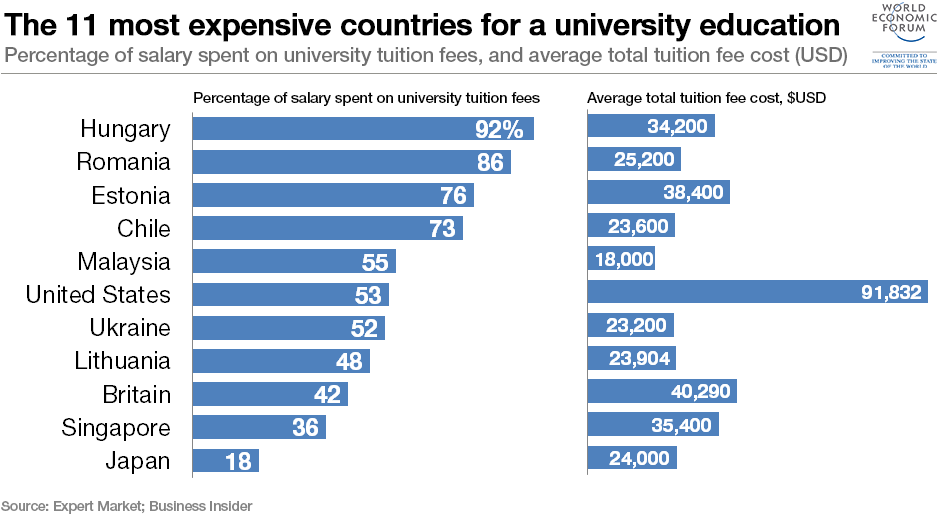The 11 most expensive countries for a university degree

Britain and the US are famous for high university tuition fees, but they actually don’t top the list of places that parents spend most of their income on higher education for their children.
Online B2B supplier site Expert Market analysed tuition fee data from the Quacquarelli Symmonds (QS) Top Universities, for academic year 2014/2015 and the Gallup Median Self-Reported Income report data in 2013.
It found the UK and US are actually somewhere in the middle of the top 11.
The list, which is based on tuition fees for a standard bachelor’s degree as a percentage of household incomes around the world, shows that some parents are willing to spend over 90% of their income on a standard bachelor’s degree at public institutions for their kids.
Business Insider took a look and added updated info about country income.
1. Hungary
This article is published in collaboration with Business Insider, and was also originally published by Expert Market. Publication does not imply endorsement of views by the World Economic Forum.
To keep up with the Agenda subscribe to our weekly newsletter.
Author: Lianna Brinded is the Finance Editor, overseeing markets, economics, wealth, fintech, banking, and regulation coverage for Business Insider.
Image: A student reads under the afternoon sun. REUTERS/Mike Segar.
Don't miss any update on this topic
Create a free account and access your personalized content collection with our latest publications and analyses.
License and Republishing
World Economic Forum articles may be republished in accordance with the Creative Commons Attribution-NonCommercial-NoDerivatives 4.0 International Public License, and in accordance with our Terms of Use.
The views expressed in this article are those of the author alone and not the World Economic Forum.
Stay up to date:
Future of Work
Related topics:
Forum Stories newsletter
Bringing you weekly curated insights and analysis on the global issues that matter.
More on Education and SkillsSee all
Jumoke Oduwole and Abir Ibrahim
November 11, 2025








